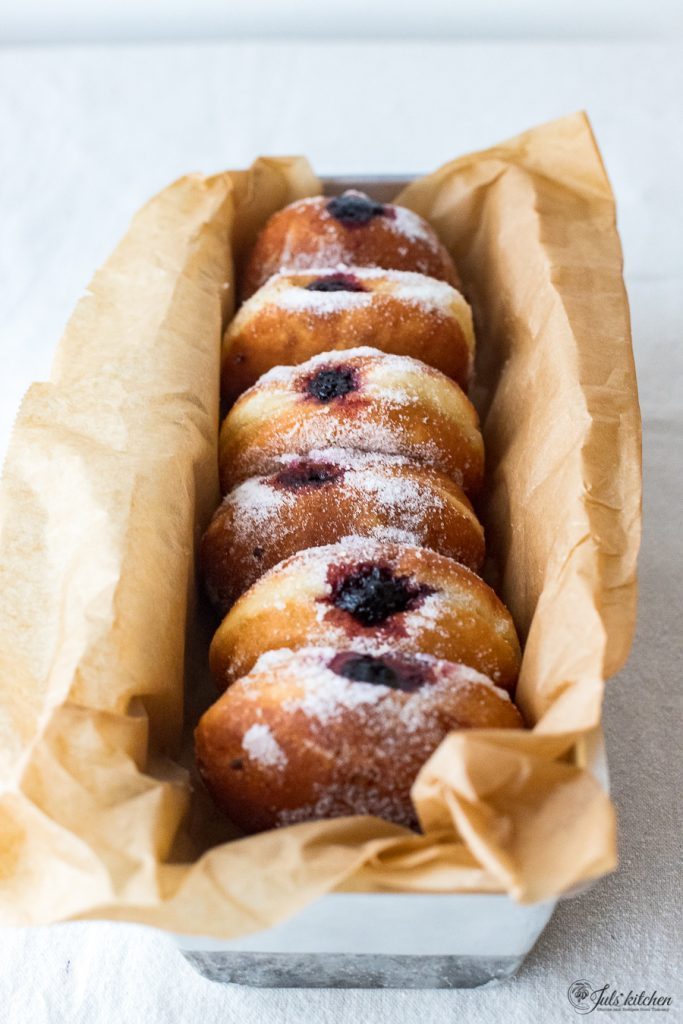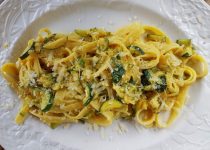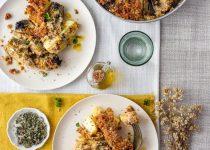Bomboloni, the Italian doughnuts. Memories of carefree days
These are sunny days that taste like early Spring, days of morning walks in the countryside before work. I feel the vibrations of the upcoming season, so I try to shake off the fatigue of a tiring winter, which I had completely underestimated. I channel this energy in the kitchen, too, stubbornly trying to perfect some recipes: the brioche bread, a wholemeal bread loaf, rice fritters. I write these recipes in a notebook, noting down the date and the little tweaks I make.
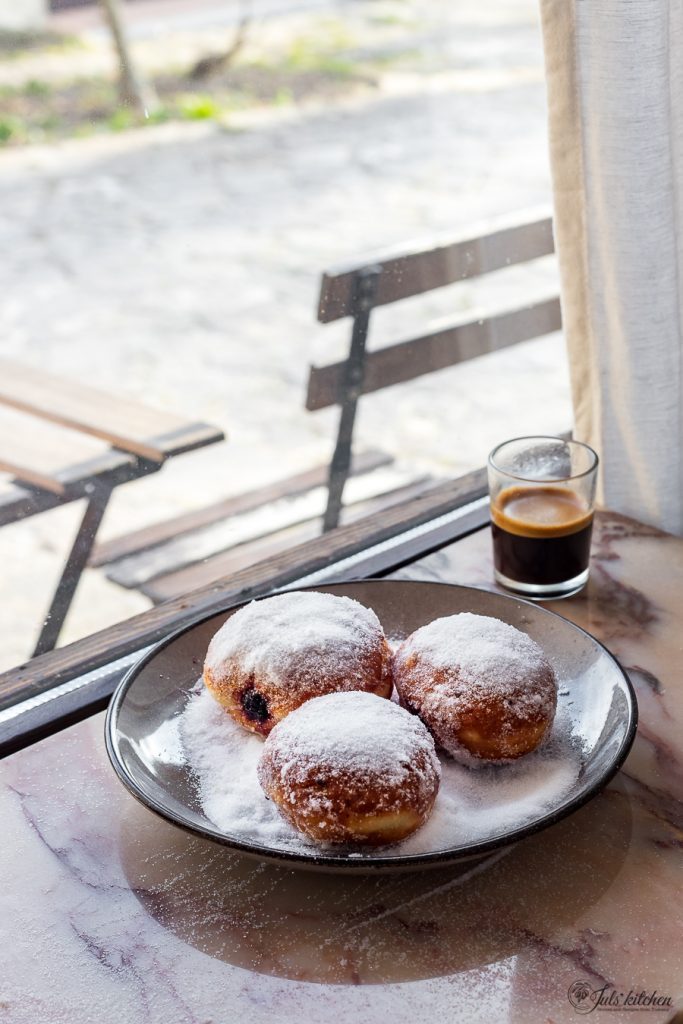
Writing recipes by hand is a habit for me.
Every time I write a recipe for a magazine, or for the blog, I have another notebook where I scribble quantities and times, which I then use as hints to retrace the procedure. Sometimes they are precise and methodical, others the reconstruction of the recipe seems more like a treasure hunt, or a rebus of a puzzle magazine. I archive those notebooks with dates and a progressive number: this is also where I write drafts of many blog posts and newsletters and where I scribble down ideas and projects. These notebooks are the drafts of the blog, and even of my life.
But in the case of those recipes that I try to improve, it is different: I have a black notebook, with a hard cover, divided into sections: pastry, bakery… This is where I write those recipes that I work on from year to year, to refine them and make them mine. They are often traditional recipes, crystallised in my memory in a precise moment of my life: they have unforgettable taste, texture and aroma. This is where I collect my madeleines of taste. Every time I try to get closer to that perfect idea that has been printed in my mind in an unrepeatable moment. At each attempt, I get a little bit closer.

In these days I worked on the recipe for Tuscan bomboloni.
Fourteen years old, summer holidays in Maremma with the family, lazy days made of books and comics, beach tennis with my cousin Margherita, huge slices of crisp watermelon, sticky hugs of sunscreen and sand with my sister, who was still a child, gelato after dinner. In the morning the doughnut man would pass from bungalow to bungalow, on a vintage bike with a huge basket, selling bomboloni, ciambelle, krapfen and cornetti. His call was the best wake up. My parents would buy us a bombolone alla crema for breakfast. It would come wrapped in a white paper bag, heavy, still warm. Tall maritime pines and brackish air were the background to that perfect bombolone, that I would eat with big bites, hungry for life, bites that turned into smiles covered in sugar.
Thirty years old, Sunday morning in Florence, breakfast at the bar close to Tommaso’s house. A thick frothy cappuccino that smells like roasted coffee, a macchiato, two warm bomboloni alla crema piled on a saucer. Our breakfasts together, so exceptional as to deserve a trip to the bar as soon as we would wake up, often with our eyes still asleep. The bombolone was the beginning of a day all for us, to invent and live together.
The bomboloni bind with an invisible thread some of the most carefree moments of my life: the unripe teenage years and the sultry Tuscan summers at the beach and the full adult age, overflowing with my love for this man and his city. Bomboloni are not a standard, they are the exception to the rule, a day to celebrate, the holiday you do not want to forget, an evening with friends that stretches up till morning, with the sweet memory of a bombolone lingering in your mind as the sugar that sticks to your lips.
That’s why I want a recipe for bomboloni that not only works, but that is also practical and that brings back to my mind the maritime pines, the bars of Florence, the occasions to celebrate.
After having tried Donna Hay ‘s krapfen and the bomboloni made with sourdough started, I opened Paolo Petroni’s Il Libro della Vera Cucina Fiorentina and I looked for his recipe for bomboloni toscani. Petroni introduces potatoes into the dough, claiming that this was the real recipe that was once made. Two minutes later I was boiling the potatoes and looking for all the ingredients to make the bomboloni.
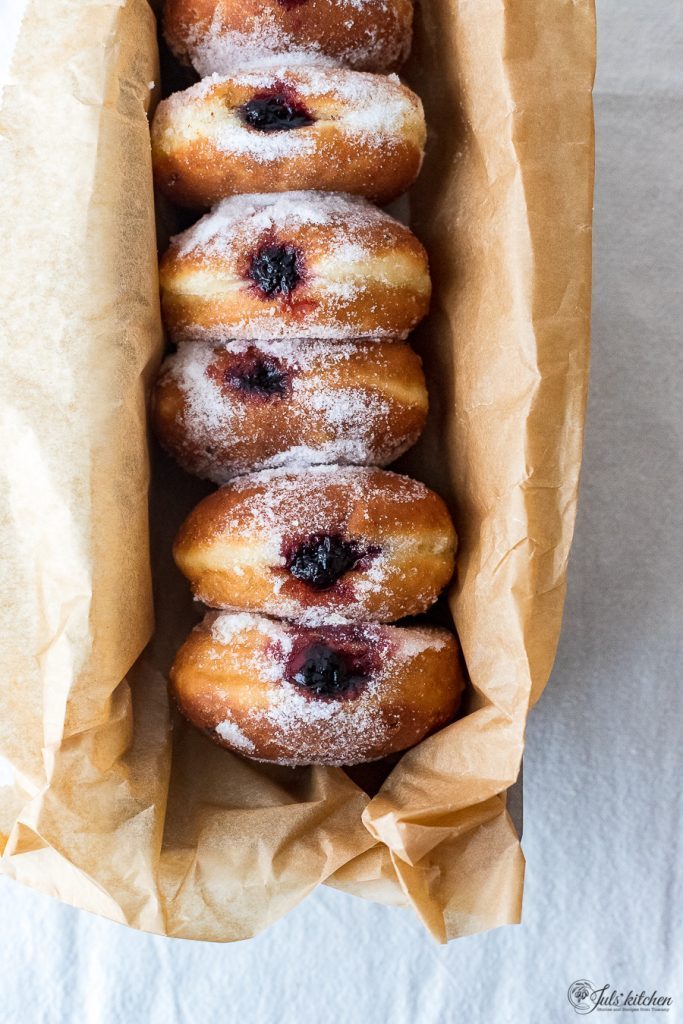
The Tuscan bomboloni – i bomboloni toscani
Tuscan bomboloni are typically filled with our crema pasticciera, the thick Italian custard. Unlike krapfen, they are filled once fried: you will need a pastry bag or a decorating syringe, with a thin and round piping nozzle, so that you can easily pierce the bomboloni while they are still warm and fill them with your favourite filling.
I filled my bomboloni with a blueberry jam that I made last summer, as I wanted a fruity filling. You can fill them with your favourite jam or compote, with a thick custard or a chocolate custard, but, please, eat at least one of these bomboloni just like it is, empty, freshly fried, generously sprinkled with sugar, light and airy, with its delicate aroma of lemon.
Some tips to make bomboloni
Boil the potatoes properly. Rinse them and arrange them in a saucepan with their skin still on. Cover them with cold water. Bring the water to a boil, lower the heat and cover the saucepan with a lid. Cook the potatoes until you can easily pierce them from side to side with a knife. It is important that the potatoes are well cooked, so that, when you rice them, they won’t have lumps, which could then remain in the dough.
Rice the potatoes when they are still hot, and use them in the dough when they are still slightly warm: this will help the bomboloni to rise, especially if you work in a cold environment, like my kitchen in winter. If it’s summer and it’s hot, make sure to rice the potatoes when they are still hot, but then let them cool completely before using them.
I kneaded the bomboloni by hand, in a large and shallow bowl. The dough will initially be very sticky: do not get discouraged, and do not add more flour. Slowly, kneading, you will be able to remove it from the bowl, Knead it on a lightly floured wooden board until it becomes smooth and elastic.
Before proceeding with the recipe, inspired by Paolo Petroni’s bomboloni toscani, a few important links:
- To learn more about fresh yeast read here.
- Here you can learn how to convert fresh yeast to original dry yeast.
- Here you can read why I prefer riced potatoes over mashed potatoes for these bomboloni
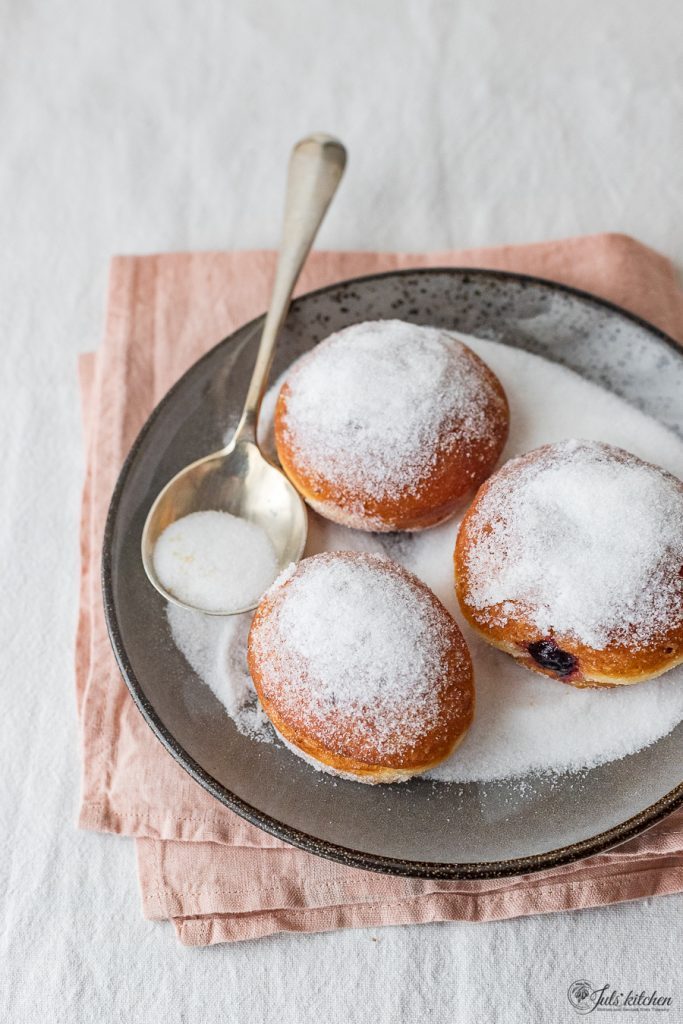
Tuscan bomboloni
CourseDessert CuisineItalian Keywordbomboloni, doughnuts Prep Time20 minutes Cook Time10 minutes Raising time3 hours Total Time30 minutes
Ingredients
- 300 g (2 1/3 cup – 10 ½ oz) of bread flour
- 200 g (7 1/8 oz) of boiled potatoes, already skinned and riced
- 15 g of fresh yeast
- 150 ml (2/3 cup) of warm water
- 80 g (6 1/3 tablespoon – 2 ¾ oz) of sugar
- 2 egg yolks
- 50 g (3 ½ tablespoons) of butter, melted
- Zest of 1 organic lemon
- ¼ teaspoon of salt
- 1 l (1 ¼ cup – 1 1/8 US quart) of frying oil
Instructions
- Dissolve the fresh yeast in warm water.
- In a large bowl, collect the flour, the sugar, the riced potatoes and the grated zest of a lemon. Pour in the water with the yeast and start kneading using one hand, gradually adding the yolks and the melted butter, and, eventually, the salt.
- The dough will be quite sticky, but with some patience – and no extra flour – it will start to come together.
- Lightly dust a wooden board. Scrape the dough from the bowl onto the board and knead until it becomes smooth and elastic.
- Shape the dough into a ball, lay it in a bowl greased with some olive oil and cover with a damp cloth. Let it rise in a warm place, such as the oven with the little light on, until it doubles. It will take about 2 hours.
- When the dough has doubled, lightly flour a wooden board and remove it from the bowl, flatten it lightly, then with a rolling pin roll it to about 1cm thickness.
- Using a round cooking cutter, I like to use a 6 cm one, cut out the bomboloni and set them aside.
- Knead again what is left after the first bomboloni, roll it out and cut more bomboloni.
- Lightly dust with flour the bomboloni, cover them with a cloth and let them raise again.
- When the bomboloni are doubled, fill a large pan with frying oil. Be generous with the oil, because the bomboloni have to float, to have that typical lighter line in the centre.
- Heat the oil to 155°C-160°C. If you do not have a kitchen thermometer, test the temperature with a wooden spoon. Immerse the spoon handle in the oil: if it will be immediately surrounded by tiny bubbles, the oil is ready to fry.
- Fry the bomboloni in batches, for a few minutes per side. When they are golden on one side, turn them gently, let them brown on the other side, then lift them with a slotted spoon and lay them onto a plate lined with some kitchen paper. Sprinkle them immediately with sugar.
- Fry all the bomboloni, then eat them as they are or fill them as you prefer: thick custard, chocolate spread, or jam.
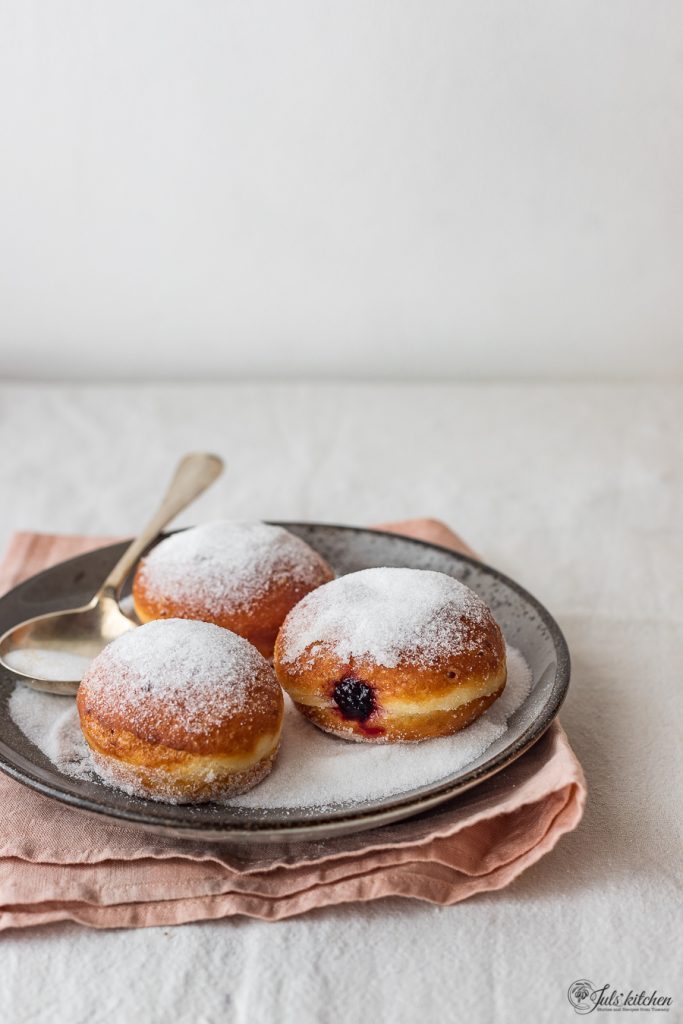
Carnival, time to fry delicious food, but not only…
I wonder why at Carnival I always feel the urge to fry… This past week I fried not only the Tuscan bomboloni, but also a ton of rice fritters. Next on the list, the cenci and then that Florentine schiacciata that has now become a classic at home.
Carnival fried dough, the Tuscan cenci.A teaspoon of baking soda will help the cenci to be light and develop those airy bubbles on the surface, a sign that you knead the dough, rolled it out and fried cenci perfectly, or, at least, it’s like this according to my parents’ childhood memories! Anyway, this is the recipe of our family Carnival cenci, but I’m pretty sure that every family in Italy has it’s own secret recipe, along with a special and different name for this carnival fried dough, since they are a cross cultural element.
Carnival rice fritters. The Tuscan culinary tradition has delicious recipes for rice fritters to celebrate Carnival, so I tried to make a similare recipe using my Grandma’s recipe and mixing it with other recipes, one from Pellegrino Artusi and one from Giovanni Righi Parenti.
Schiacciata alla fiorentina. At the beginning the schiacciata was just bread dough enriched with lard. Just remember, Carnival always falls in the period when the pig is traditionally slaughtered, so lard was there, ready to be used. Then it was made even more special by adding sugar, vanilla and oranges, so recognizable in the cake where you use both the grated peel and the juice. Carnival was in fact the last chance to indulge in the pleasures of food and life before Lent – semel in anno licet insanire used to say the Latins, it was a time in which everyone was allowed to break religious and social conventions.
Cooking with an Italian Accent, the podcast.
The third episode of Cooking with an Italian Accent is now on line, it is all about Tuscan bread!
